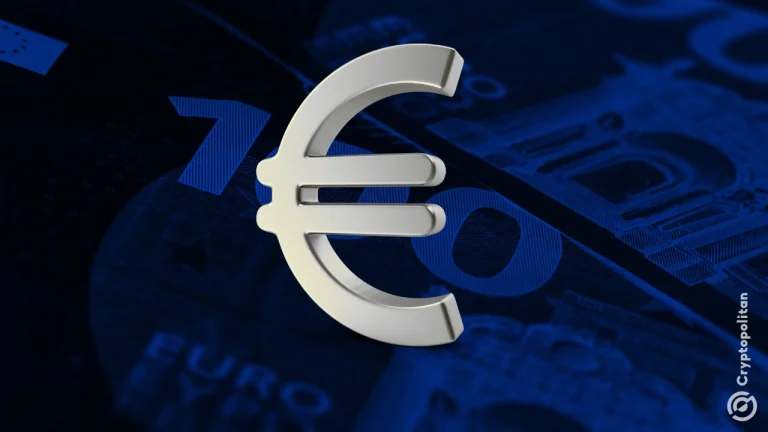Key Takeaways
- ECB Governing Council member Boris Vujcic stated that the bank has successfully reduced inflation without causing a recession, meeting its mandate.
- The ECB has held interest rates steady for three consecutive meetings, with no immediate plans for cuts despite inflation nearing the 2% target.
- Vujcic expressed concern over retail fund redemptions outpacing hedge fund redemptions, viewing it as a potential indicator of market instability.
- The ECB is progressing with its digital euro project, aiming for a 2029 launch, but faces opposition from some EU legislators and financial institutions regarding its potential impact on private payment systems.
- The digital euro proposal is being debated, with suggestions for it to primarily function as an offline alternative to cash rather than a direct competitor to existing digital payment systems.
ECB Policy on Track, Inflation Reduced Without Recession
Boris Vujcic, a member of the European Central Bank’s (ECB) Governing Council, has affirmed that current monetary policy is aligned with objectives and that the bank has successfully fulfilled its mandate. He highlighted the achievement of reducing inflation without triggering a recession, a significant accomplishment given the economic climate.
These comments emerged approximately a week after the ECB’s decision to maintain interest rates unchanged for the third consecutive meeting. This stance indicates confidence in the current policy’s effectiveness in curbing inflation while supporting economic growth.
During the previous meeting, ECB President Christine Lagarde acknowledged the eurozone economy’s progress but cautioned about navigating ongoing uncertainty. She stressed the central bank’s commitment to maintaining a robust position amidst prevailing global geopolitical tensions.
Vujcic Expresses Concern Over Retail Investor Behavior
With inflation approaching the 2% target and Q3 GDP growth exceeding expectations, a cut to the deposit rate, currently at 2%, appears unlikely in the near future. The central bank has implemented eight rounds of rate hikes previously.
📍 The ECB is scheduled to release updated quarterly forecasts and provide further clarity on inflation dynamics at its December meeting. However, some internal projections suggest inflation may remain below the target for the next three years. Market analysts consider an interest rate cut in December improbable, though a 40% probability exists for a reduction by mid-2026.
Vujcic also pointed out potential risks to Europe’s economic stability, emphasizing the need for fiscal discipline and noting signs of market overvaluation. He specifically expressed concern about the flow of funds, stating that retail fund redemptions exceeding those from hedge funds is particularly worrying. That’s usually a sign that something’s coming that’s not very good, he remarked, while maintaining that the bank’s policy remains in a good place.
Insights on Inflation and Economic Growth
Speaking on Thursday, Luis de Guindos, the ECB’s Vice President, echoed the sentiment that the bank is comfortable with current interest rate levels. He anticipates that any dip in inflation below 2% will be transient, with inflation projected to fall below the target next year.
✅ Some policymakers, however, have voiced concerns that such undershooting could anchor inflation expectations at persistently low levels, reminiscent of the pre-pandemic era.
“If (undershooting) happens, it will be something that is going to be temporary. We can be comfortable with the present level interest rates. I think that convergence to 2% without any overshooting or undershooting is now the main baseline scenario for projections,” de Guindos stated.
He further indicated that recent economic data points to solid, albeit modest, growth of approximately 1%, consistent with the bloc’s potential. This has led to a slightly more optimistic outlook among policymakers, who now see the economy aligning with the ECB’s forecasts.
Challenges Facing the Digital Euro Project
The European Central Bank is encountering significant hurdles in advancing its digital euro project, with the targeted 2029 launch facing increasing opposition from EU legislators and financial institutions.
A consortium of 14 prominent lenders, including Deutsche Bank, BNP Paribas, and ING, has issued a warning that a digital euro could potentially displace existing private payment systems. These institutions argue that a retail-focused digital euro coin would essentially replicate the functions of current private payment options without offering demonstrable added value to consumers.
Fernando Navarrete, a Spanish conservative lawmaker involved in the Parliament’s assessment of the digital euro, has advocated for a more streamlined version of the proposal. In a report released last week, Navarrete suggested that the digital euro should primarily serve as an offline alternative to physical cash, contrasting with the ECB’s vision of a real-time digital payment system.
He contended that introducing online payment capabilities could lead to the creation of a competing payment ecosystem, potentially hindering the expansion of private payment systems across the EU. Navarrete proposed that an online version of the digital euro should only be considered if European payment firms prove unable to compete effectively with major international players, particularly those based in the U.S.
⚡ The ECB initiated discussions regarding the digital euro concept in 2020. Last week, its Governing Council approved the commencement of preparatory work necessary for a potential issuance by 2029, with a pilot phase slated to begin in 2027.
Final Thoughts
The ECB maintains confidence in its current policy framework for managing inflation effectively. However, concerns persist regarding both market stability signals and the viability of the digital euro project amidst institutional and legislative opposition. The central bank’s upcoming forecasts will offer further insight into its economic outlook and policy trajectory.

